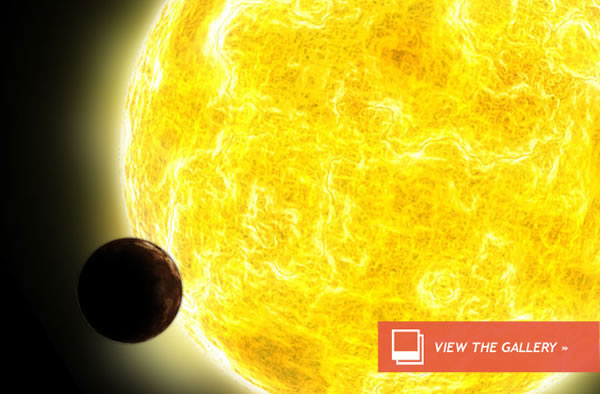Super-Dense Planets May Be Boiled Gas Giant Dregs
Super-Dense Planets May Be Boiled Gas Giant Dregs
Ever since the early 1990s, when exoplanets were first confirmed to exist, we seem to just keep finding more and more for which we have no existing definition.
The latest addition to the planetary menagerie? Chthonian planets. Super-dense planets, barely larger than Earth, but denser than iron. Now that they’ve been found, astronomers are trying to figure out how they form.
It’s quite likely that these planets, discovered in data acquired by NASA’s Kepler space telescope, are actually the exposed cores of former gas giants. Neptune-sized worlds which have been boiled away, leaving a tightly compressed core to drift naked in space.
At least, that’s the most likely explanation for what these oddball worlds might be. None of the conventional planet formation theories can explain them!
Exposed Planetary Cores
Olivier Grasset, a geophysicist from the University of Nantes, France, is among those investigating what mechanisms could form such unusual planets. The conclusion which he and his colleagues reached was that these could be the “fossil cores” of Neptune-sized worlds.
After forming in the icy outer parts of their star systems, they would have then migrated inwards. Becoming hot neptunes, their volatile outer layers would then boil away leaving behind a compacted ball of rock and metal, like planetary dregs.
The interesting thing is that, while the planets recently discovered by Kepler are certainly new discoveries, they are by no means the first of this kind of planet to be found. The story actually begins a little over a decade ago…
In the late 1990s, another shocking planet was discovered. HD 209458b, nicknamed “Osiris” by its discoverers, is an extreme world, which took us all by surprise. It is 220 times as massive as Earth and orbiting so close to its parent star that its year lasted just three and a half Earth days. It turns out Osiris is actually evaporating away, leaving a vapor trail in its wake.
The conclusion drawn by many exoplanet researchers was that any planet which strayed too near to a star would probably evaporate away. Osiris itself is estimated to have already lost around 7 percent of its original mass. This led to a group of researchers, headed by Guillaume Hébrard to hypothesize a previously unknown type of planet. Given the name of chthonian planets, these were expected to be the extremely dense remnants of gas giants which had boiled away in the heat.
The first chthonian planet discovery was actually 10 years ago. CoRoT-7b, 490 light-years away, and with an orbit so close that one year on this planet would last just 20 hours. Its orbital radius of 0.017 AU puts it just four hundredths as far from its star as Mercury is from the sun. It also has somewhere between 5 and 11 times the mass of Earth packed into just 1.7 times Earth’s radius.
While not much has been said recently about this bizarre flavor of planet, the new Kepler data shows that it’s certainly not alone. With several such planets out there, they’re now officially in a brand new class of their own.
Bake Me A Planet!
Chthonian planets didn’t originally form the way Earth did. Instead, they formed in the crushing interior of a gas giant. Exactly what lies inside a planet like Jupiter is an open question, but pressures will easily be able to reach five million times the pressure at sea level on Earth – 500 gigapascals.
Temperatures are also expected to be extreme, reaching around 6000 Kelvin, which is about the same as the temperature on the surface of the sun. Worlds like these will certainly be no strangers to heat.
Under such extreme conditions, these planets will form to be extremely dense. Together with fellow researchers Antoine Mocquet, a planetary scientist also at Nantes, and Christophe Sotin, a planetary geologist working at NASA JPL, Olivier Grasset used a computer simulation to try and work out how a chthonian planet might form.
They found that If a Neptune-like world were to evaporate slowly, taking billions of years, then the core of the planet would “relax” and expand (most materials don’t like to remain compressed once any pressure is removed).
But if, instead, the planet’s outer layers were to be torn away far more rapidly, the core would cool suddenly. Just like a steel sword being quenched, it would harden relatively fast and retain its dense state as a “very compressed super-Earth.”
Even though Grasset and his team state that they used conservative assumptions in their calculations, he also admitted that there are a lot of uncertainties still to be examined. The truth is, no one really knows how materials like rock and metal react to the extreme pressures found inside gas giants.
While this may be the best hypothesis we have to explain how super-dense planets like these form, it has to remain – at least for now – only a hypothesis.
Mar 22, 2013 08:50 AM ET by Markus Hammonds












